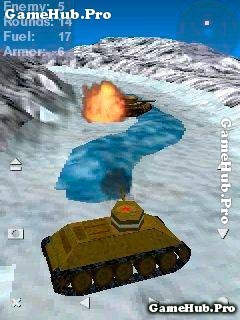
The side armour of the Panther was comparatively weaker and could be pentrated at 3,500 m (3,800 yd) according to the same report. All shells are shown from two sides.Ī Wa Pruef 1 Report dated 5 October 1944 has data on the penetration ranges of the 122 mm A-19 gun against a Panther tank angled at 30 degrees this estimated that the A-19 gun was unable to penetrate the upper glacis plate of the Panther from any distance, could penetrate the lower glacis plate from 100 m (110 yd), could penetrate the mantlet from 500 m (550 yd) and could penetrate the front turret from 1,500 m (1,600 yd). Left to right: cartridge case, high-explosive/ fragmentation shell OF-471, armor-piercing high explosive shell BR-471, armor-piercing ballistic capped shell BR-471B. Projectiles and charges of the separate-loading ammunition of the A-19/D-25T 122mm gun. First deliveries of IS-122s mounted with this gun were in December 1943. It was therefore considered an adequate anti-tank gun. Soviet proving-ground tests showed that the D-25 could penetrate the front armor of the German Panther at 2,500 m (2,700 yd) while the D-10 could do so at a maximum range of 1,500 m (1,600 yd). The D-25 used a separate shell and powder charge, resulting in a lower rate of fire compared to the single-piece ammunition used in most tanks, a serious disadvantage in tank-to-tank engagements. Compared to the older F-34 76.2 mm tank gun, the D-25 delivered 5.37 times the muzzle energy.Īfter testing both the D-25 and D-10 on the IS-122, the former was selected as the main armament of the new tank. Also, the D-10 was a relatively new weapon in short supply, while there was excess production capacity for the A-19 and its ammunition. The D-10 had been designed for anti-tank fire and had better armor penetration than the A-19, but the smaller caliber meant it had a less useful high explosive round. Two candidate weapons were the D-25 122 mm tank gun, the ballistic characteristics of which were identical to the A-19 122 mm gun, and the D-10 100 mm gun, which was based on a dual-purpose naval gun. Efforts to up-gun the IS-85 began in late 1943. Its designation was simplified to IS-1 after the introduction of the IS-122, later renamed as IS-2 for security purposes.īy 1943, engineers had succeeded in mounting the 85 mm gun to the T-34 medium tank, making it as well-armed as the KV-85 heavy tank. First deliveries were made in October 1943, and the tanks went immediately into service. The Object 237 prototype, a version of the cancelled KV-13, was accepted for production as the IS-85 heavy tank. Like the KV-1S, the KV-85 served in dwindling numbers and was quickly overshadowed by the superior IS series. From September to October 1943, a total of 130 KV-85s were produced, before the assembly lines began to shift over.
Tank ace 1944 driver#
The hull MG was then moved to the opposite side of the driver and fixed in place to be operated by the driver. The radio operator was replaced with an ammunition rack for the larger 85 mm ammunition. To accommodate the Object 237 turret, the KV-1S hull was modified, increasing the diameter of the turret ring with fillets on the sides of the hull. The KV-85 was created by mounting an Object 237 turret on a KV-1S hull. Dukhov's team was instructed to create a stopgap KV tank, the KV-85, which was armed with the 52-K-derivative gun of the SU-85, the 85 mm D-5T, that proved capable of penetrating the Tiger I from 1,000 m (1,100 yd).

Before Object 237 had time to mature, intense tank fighting in the summer of 1943 demanded a response.

The capture of a German Tiger tank in January 1943 led to a decision to develop a new heavy tank, which was given the codename Object 237. Production of the KV-1S was gradually replaced by the SU-152 and ended in April 1943. It was competitive with the T-34 but at the cost of no longer having the heavier armor. In 1942, this problem was partially addressed by the KV-1S tank, which had thinner armor than the original, making it lighter and faster. Moscow ordered some KV-1 assembly lines to shift to T-34 production, leading to fears that KV-1 production would be halted, and the SKB-2 design bureau, led by Kotin, closed. It was much more expensive than the T-34, without having greater combat performance. The KV-1 was criticized by its crews for its poor mobility and the lack of a larger caliber gun than the T-34 medium tank. Later IS-2 converted models were replaced with the 122mm D-25T gun whilst retaining the same hull.

IS-85 (IS-1) Prototype equipped with D-5T gun.


 0 kommentar(er)
0 kommentar(er)
